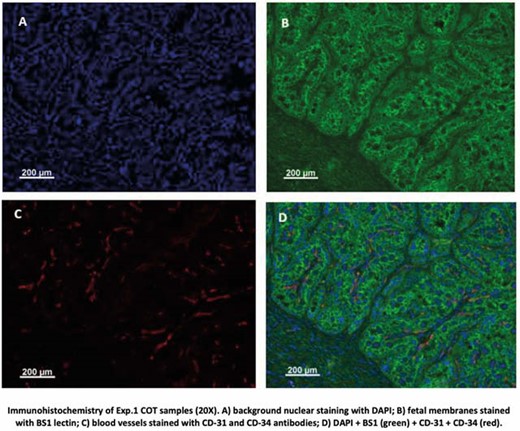-
PDF
- Split View
-
Views
-
Cite
Cite
Bethania J Davila Ruiz, Carl R Dahlen, Jennifer L L Hurlbert, Friederike Baumgaertner, Kerri A Bochantin, Ana Clara B Menezes, Wellison Diniz, James D Kirsch, Pawel P Borowicz, Sebastian Canovas, Lawrence P Reynolds, PSV-B-17 Effect of Dietary Supplementation with Vitamins/Minerals and/or Energy on Fetoplacental Vascularity in Crossbred Angus Heifers, Journal of Animal Science, Volume 100, Issue Supplement_3, October 2022, Pages 346–347, https://doi.org/10.1093/jas/skac247.634
Close - Share Icon Share
Abstract
The objective of these studies was to evaluate if vascularity of the fetal part of the placenta, termed cotyledon (COT), of crossbreed Angus heifers is affected by vitamin and mineral (VTM) and/or energy (NRG) supplementation during pregnancy. We hypothesized that dietary supplementation with VTM and/or NRG would improve fetoplacental vascular development, which is an important index of placental function. Two experiments were conducted: In Exp. 1, 34 heifers were randomly assigned to VTM/NoVTM supplementation 71 days before artificial insemination (AI). At breeding, the diet was maintained and heifers were randomly assigned to receive NRG, resulting in the following treatments combinations: NoVTM-NoNRG (n=8), NoVTM-NRG (n=8), VTM-NoNRG (n=9), and VTM-NRG (n=9). Dietary supplementation was maintained until d 83 when heifers were ovariohysterectomized and COT was collected. On Exp. 2, 72 heifers were randomly assigned to VTM supplementation (n=36) or control (CON) (n=36) treatments at breeding and continuing until parturition when COT from a subset of 28 heifers was collected. The COT from both experiments was evaluated by immunohistochemistry using rabbit anti-CD34 and anti-CD31 antibodies as markers for vascularity along with DAPI for background nuclear staining. In the d 83 group, BS1 lectin was used as a marker of fetal placental tissue. Three images per animal were captured and the percentage/number of blood vessels within the tissue area was analyzed. The data were analyzed using the GLM procedure of SAS. Results indicated that on d 83 COT vascularity was not affected by VTM (P-value = 0.5030), NRG (P-value = 0.5450), or their interaction (P-value = 0.6664), whereas on parturition there was a tendency for COT vascularity to be greater in VTM than CON (P- value=0.0723). These results suggest that dietary VTM supplementation from breeding until parturition potentially has a beneficial effect on placental vascular development in crossbred Angus heifers.





